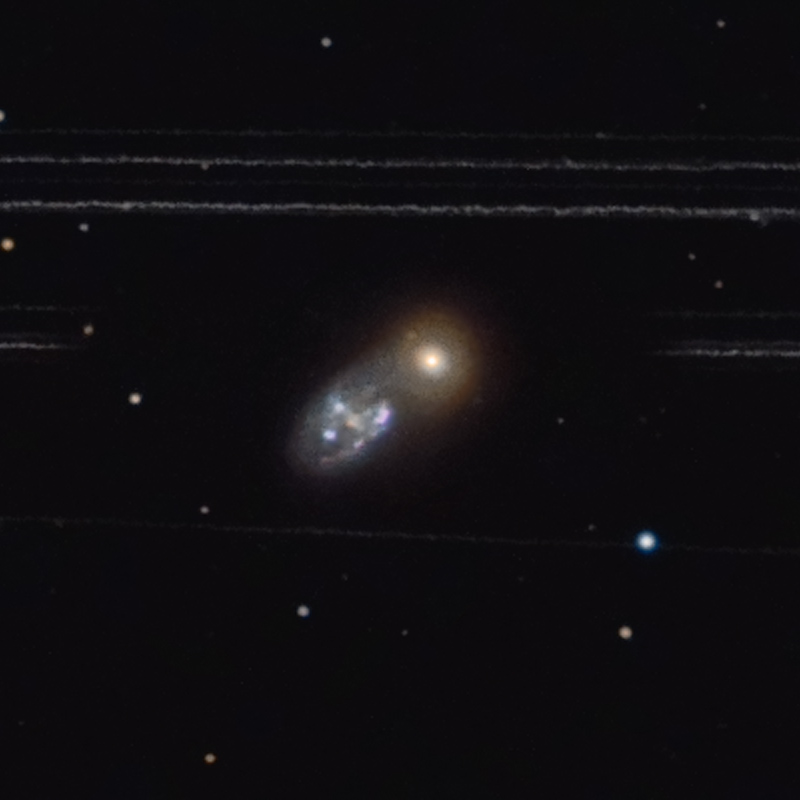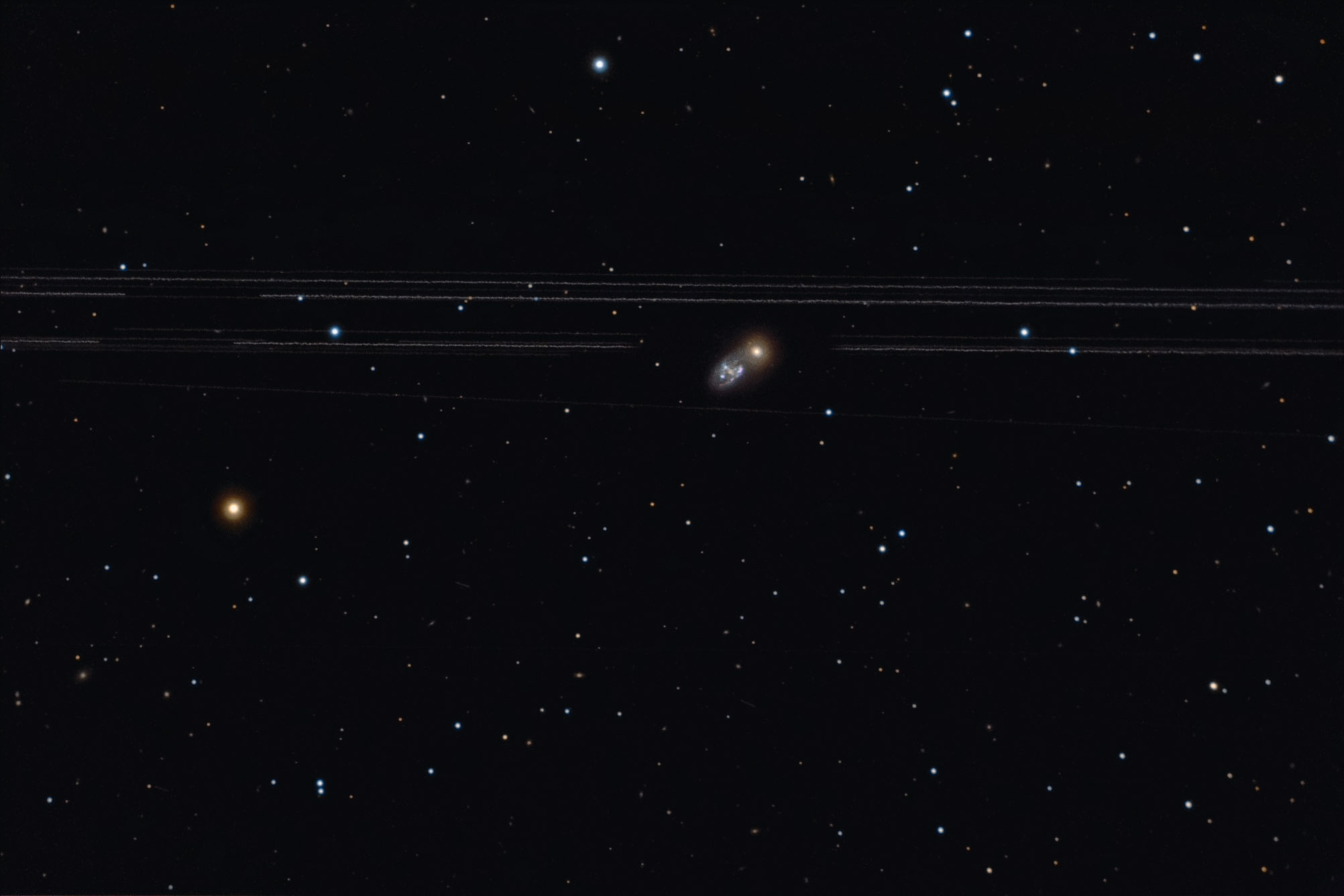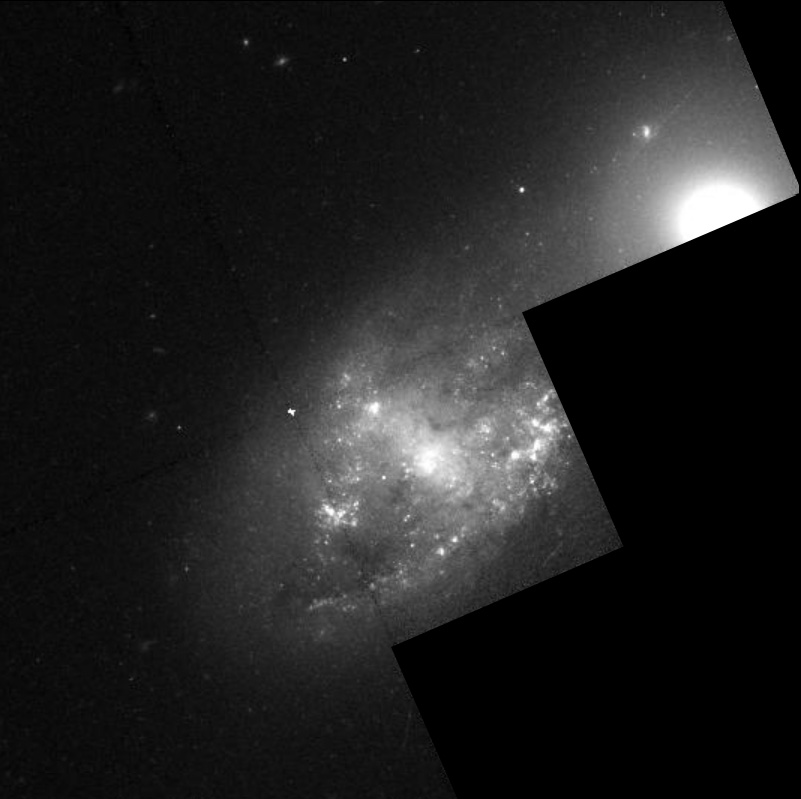| Description | Images |
Object name: ARP140Designation(s): ARP140, NGC0274, NGC0275, Arp 140 is a pair of interacting galaxies, NGC 274 and NGC 275 right to left. They are 65 million light years distant and in the constellation of Cetus. Arp classed them under; material emanating from elliptical galaxies. A category that makes little sense to me. M87 has a nice jet and would seem to fit but it's under galaxies with jets which is more accurate though its the black hole, not the galaxy itself that is the cause of the jet. Other than jets what can an elliptical, or its black hole, emanate? All galaxies I've imaged so far in this category involve highly distorted galaxies, #142 through #145. All appear to be due to interacting galaxies. Arp 140 appears to fall into this pattern. Or does it? In the other cases, both the elliptical and the spiral are distorted. Usually, the spiral is considerably more distorted which isn't surprising. But both show distortion. Not in this case. Here the elliptical, NGC 274, really an S0 galaxy not elliptical, seems little distorted though it is classed a being peculiar. But its companion, at the same redshift distance, NGC 275 is highly distorted and generating new stars like crazy. This seems hard to explain. It's likely they are much farther apart than their nearly equal redshift indicates with probably the distorted spiral being closer to us. I say this because its blue color overlays some of the golden S0 galaxy. The S0's higher density may be helping keep it from distorting very much. While some theories say an S0 is the result of a galaxy merger it appears NGC 274 was already S0 long before this encounter. That doesn't mean it didn't have a previous one billions of years earlier that created it. But now look really closely at the enlargement. There does appear to be a very faint linear feature coming from the S0 pointed to the east-northeast. There seems to be a faint tidal spray around the galaxy as well. So maybe Arp was right after all though I see no hint of the feature in Arp's image. I need to take a much deeper image though that is likely impossible due to satellite traffic. This pair is right in the geostationary belt as seen from my latitude. Related Designation(s):2MASS J00510183-0703250, 2MASX J00510187-0703247, 2MASXi J0051018-070324, 6dF J0051018-070325, 6dF J0051019-070325, 6dFGSv 00390, AGC 400423, AKARI J0051040-070350, APMUKS(BJ) B004831.13-071956.0, ARP 140, ARP 140 NED01, ARP 140 NED02, ARP140, CGS 132, GSC 4680 00028, GSC 4680 00674, HIPASS J0050-07, HOLM 026, HOLM 026A, HOLM 026B, IRAS 00485-0720, IRAS F00485-0720, KTS 07B, KTS 07C, LEDA 3166440, LGG 015:[G93] 001, LGG 015:[G93] 002, MBG 00485-0719, MCG -01-03-021, MCG -01-03-022, NGC 0274, NGC 0275, NGC0274, NGC0275, NSA 127835, NSA 127838, NSA 171640, NVSS J005104-070400, PGC 002980, PGC 002984, SSTSL2 J005101.83-070325.1, USGC S030 NED02, USGC S030 NED03, VV 081, VV 081a, VV 081b, |
Permanent link: https://images.mantrapskies.com/catalog/ARP-GALAXIES/ARP140-NGC0274-NGC0275/ARP140L4X10RGB2X10X3R-CROP2.jpg |


